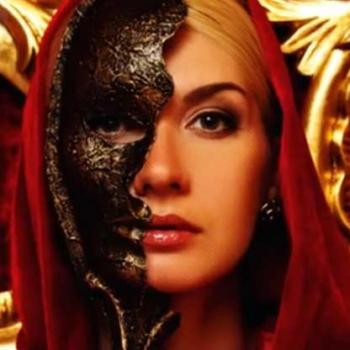My son, Mattias, who is 3, can hardly wait. I’ve caught him un-decorating the tree several times so far, and he already found – and unwrapped – one early gift from his aunt.
My wife, Amy, and I are in ministry, so we like to think our kid looks at Christmas differently. We’ve told him the story of Jesus’ birth a number of times, but when we ask him what Christmas is about, he happily says, “Santa!”
The jolly, old fat man and I may go a few rounds this year.
Although we celebrate Christmas on Dec. 25, most religious historians believe Jesus was more likely born in the spring. Late May seems to be the most popular estimate. But the early Christian Church saw an opportunity to co-opt two popular non-Christian holidays by placing their “Christ’s Mass” celebration at the same time.
Before Christmas existed, a celebration known as Saturnalia took place from Dec. 17 until Dec. 25. The 17th was the recognized birthday of the god Saturn, and the 25th marked the birth of Sol Invictus (the undefeated sun), the god celebrated for reclaiming daylight after the winter solstice. The festivities were marked with an exchange of gifts, along with much drinking, gambling and carousing. While rejecting the debauchery, Christians held on to the tradition of gift exchange, making it part of our new Christmas tradition.
A Persian religion known as Mithraism also jumped into the mix, claiming Dec. 25 as the birthday of its god, Mithra, who was identified closely with Sol Invictus of the Greek tradition. Although Christians were third on the bandwagon, the spread of Christianity through the Roman Empire in the third and fourth centuries A.D. gave it a strong foothold.
Not everyone was fond of the idea of celebrating Jesus’ birth with feasts and gifts. Origen, one of Christianity’s earliest leaders, denounced the practice as contrary to Christian principles. However, Constantine saw an opportunity to reconcile varying views of Jesus with an official holiday. Christmas became an official Roman holiday in 350 A.D., helping to assert the position that Christ was divine from birth, not just following his baptism.
It would be another 1,000 years, however, until Christmas became a holiday synonymous with large-scale celebration. King Richard II put on elaborate feasts, reminiscent of the festivals Christmas had originally recreated in its own image. In the 17th century, Christmas was all but outlawed, condemned by puritanical powers as hedonism disguised by a thin veil of piety.
Many early Americans also looked sourly upon Christmas as part of the Anglican tradition they preferred to leave behind. By the 19th century, it became the stuff of romantic nostalgia, depicted by Charles Dickens and other scribes as a time for family, sharing and celebration. Soon, retailers saw an opportunity, and, well, the rest is history.
It’s easy to get disenchanted about such a sacred day being consumed by consumption. But it helps to know that our modern-day merchants aren’t the first to mold Dec. 25 into something other than what it first was.
After all, how often do you hear people wishing one another a happy Saturnalia, or a merry Sol Invictus? When you peel back the political layers and hoopla, it’s easier to see Dec. 25 as just another day. Christmas happens whenever you recognize it. If you feel too distracted by all the other stuff, try celebrating Christmas on May 25 next year. It’s probably more historically accurate, and that way you’ll have it all to yourself.











